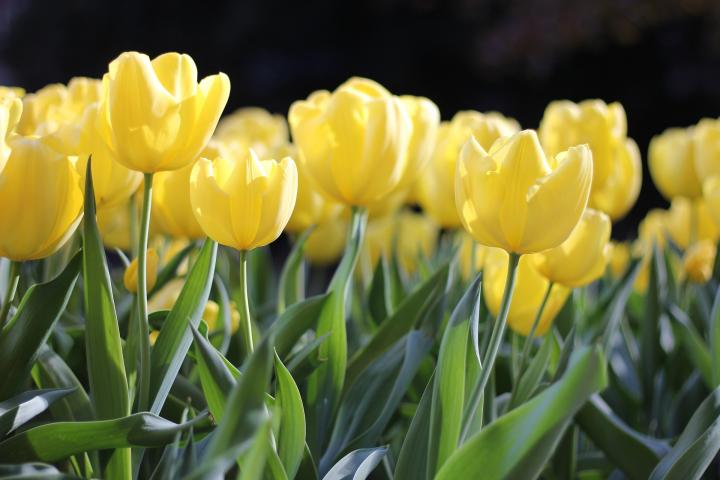
Planting, Growing, and Caring for Tulips
Read Next
Types
Tulip flowers may be single, double, ruffled, fringed, or lily-shaped, depending on the variety.
- ‘Cracker’ tulip: purple, pink, and lilac petals; midseason bloomer
- ‘Ile de France’: red blooms on stems to 20 inches tall; midseason bloomer
- ‘Marilyn’: large, ruffled, candy cane-color flower; late-season bloomer
- ‘Spring Green’: creamy-white petals feathered with green; late-season bloomer
- ‘Renown’: hot pink, egg-shape flower; late-season bloomer
Wild, or “species,” tulips are small in size, ranging in height from 3 to 8 inches. They are tougher than hybrids. Rock and herb gardens are ideal places to plant them. They look stunning when planted in large groupings.
- For early to midspring bloom time: Tulipa bakeri, T. batalinii, T. humilis, T. kaufmanniana, T. turkestanica
- For later blooming time: T. linifolia, T. neustreuvae, T. sprengeri, T. vvedenskyi
- For multicolor varieties: T. biflora, T. greigii ‘Quebec’, T. praestans ‘Fusilier’ and ‘Unicum’, T. tarda, T. turkestanica
- For a container: T. kaufmanniana ‘Goudstuk’
- For (mottled) foliage: T. greigii (mottled or striped), T. fosteriana ‘Juan’, T. kaufmanniana ‘Heart’s Delight’
- For fragrance: T. aucheriana, T. biflora, T. saxatilis, T. sylvestris, T. turkestanica
- For warmer regions: Lady tulip (T. clusiana), Candia tulip (T. saxatilis), and Florentine tulip (T. sylvestris) overwinter in the South or mild-winter areas of the West (Zones 8 to 10) without the need of a chilling period
There are so many beautiful varieties of tulips. Explore catalogs and experiment in your garden!
Gardening Products
Seems to be a lot of interest in saving Valentine tulips, especially in warm climates. Our advice is this, as given to the next reader (above): Tulips bloom in the spring so they may not appear with hollyhocks.
Tulips need a cold period, so if you are in a year-round warm(er) climate, you may have to make accommodations. If you live in a cold-winter area, plant them after they die back in the container they are currently in. Then plant them, or plant them in the fall. If you do not live in a cold-winter area, you can try putting the bulbs into the refrigerator (not freezer) in a ventilated bag for to 10 weeks. Plant them in late winter/early spring. Or try tricking them into planting at another time, although we can not guarantee success in any other season.
In the north, you can plant some perennials on top of tulips (ideally, perennials that die back, so that the tulips do not grow up through them—think large sedum; in fact, the tulips would probably be stunted just trying).
Being in Florida and, if you are going to try this, you will need to lift (dig up) and chill the bulbs every year, so you do not want to put large perennials over them.
Good luck!
- « Previous
- 1
- 2
- …
- 10
- Next »











Comments